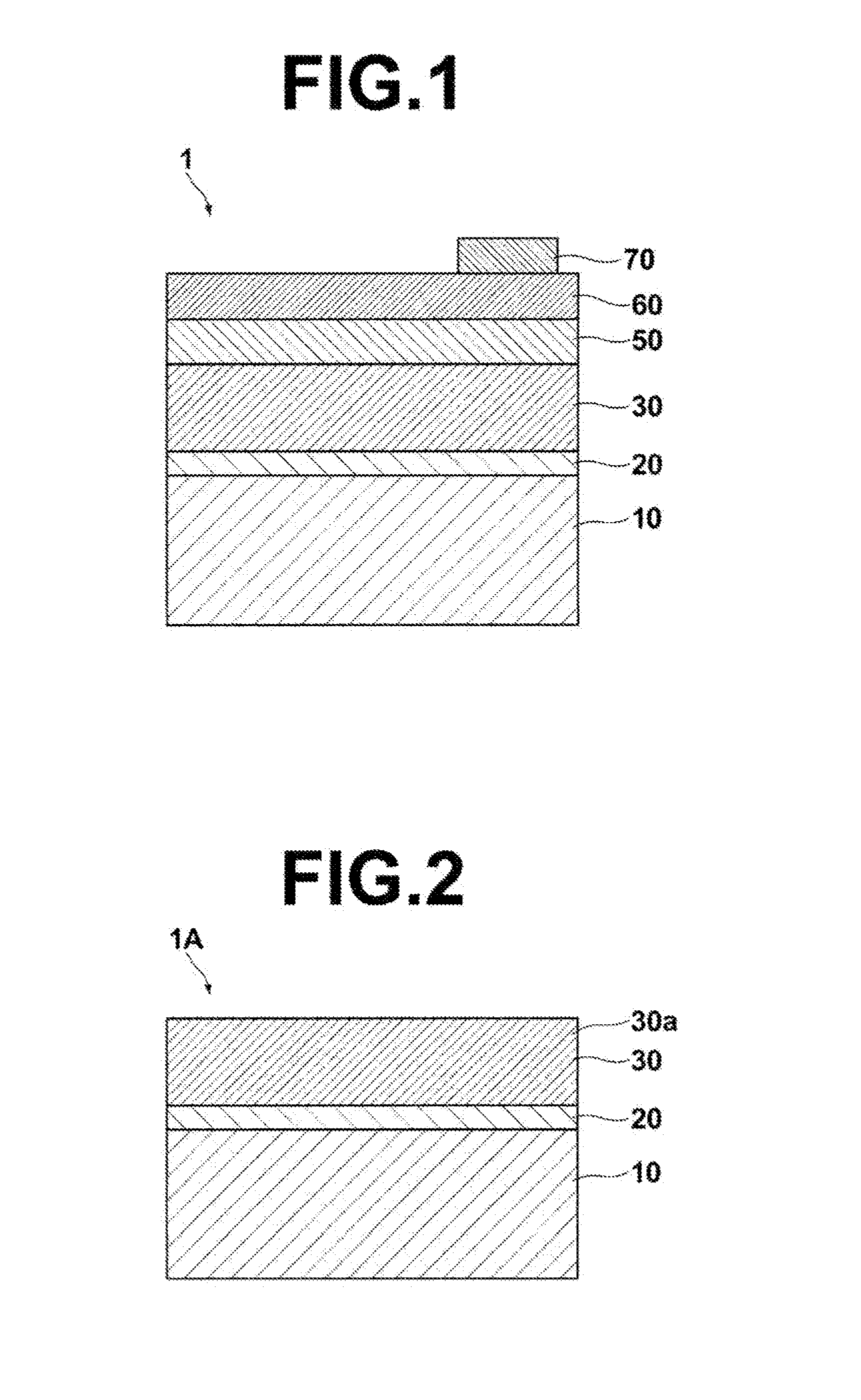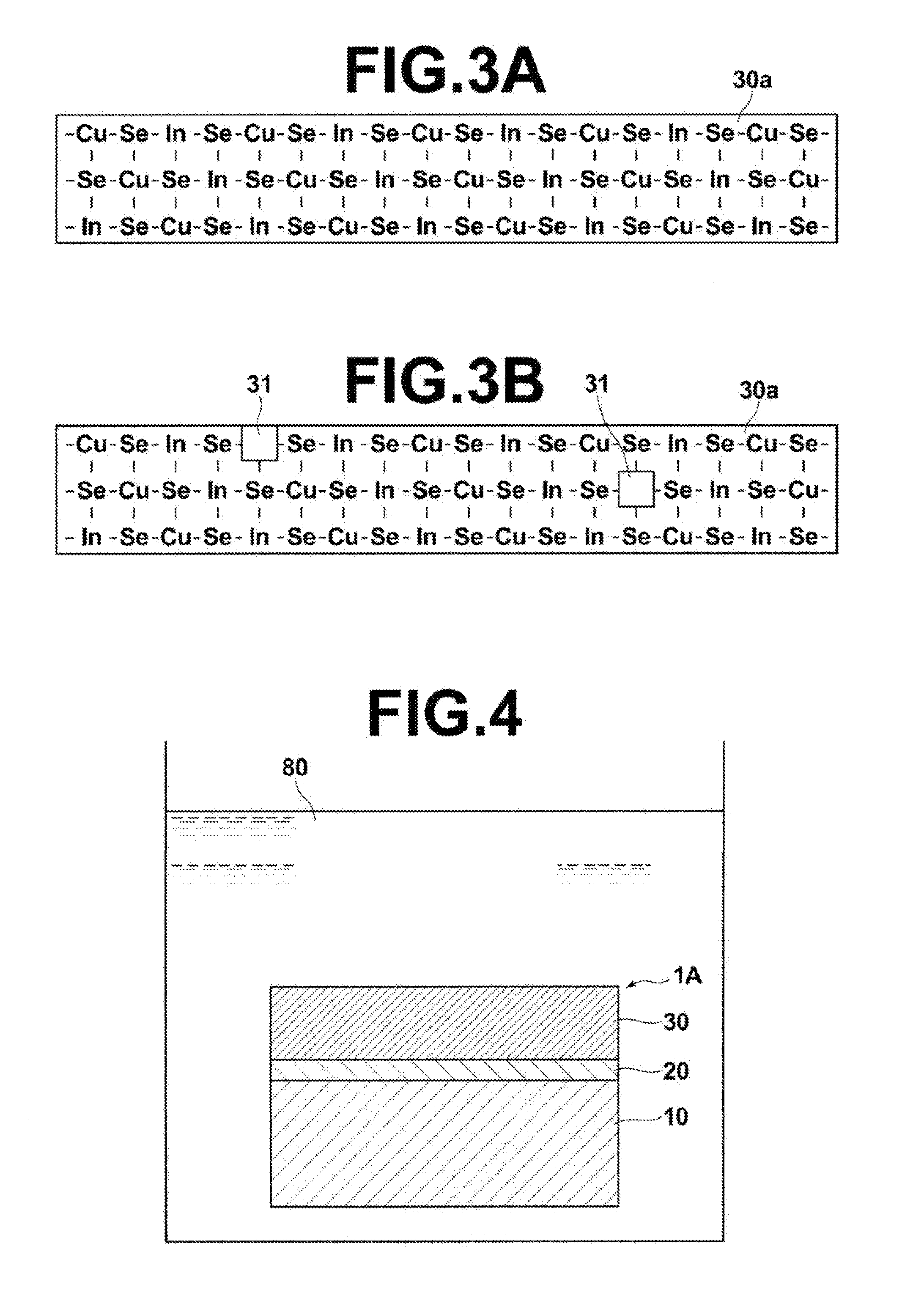Method for producing photoelectric conversion device
a technology of photoelectric conversion and conversion device, which is applied in the field of photoelectric conversion device production, can solve the problems of large apparatus size, increased production cost, and uneven size and density of pinholes formed on the surface of the cigs layer, and achieves easy and evenly diffused multivalent cations, short time period, and increased diffusion density
- Summary
- Abstract
- Description
- Claims
- Application Information
AI Technical Summary
Benefits of technology
Problems solved by technology
Method used
Image
Examples
example 1-1
[0095]The layered member A was used.
Cu Vacancy Formation Process:
[0096]Tetraethylenepentamine (TEPA) was used as an amine species. A hydrogen peroxide solution of 1.35 weight % was mixed in an aqueous solution of TEPA of about 4.5 weight %. The layered member was immersed in the mixture for two minutes.
Pn Junction Formation Process:
[0097]The layered member after the vacancy formation process was immersed in an aqueous solution of zinc sulfate (pH 3.5). Further, voltage of 1.5 V was applied between a lower electrode and a counter electrode in such a manner that the electric potential on the lower electrode side was lower (the electric potential of the lower electrode was −1.5 V, and the electric potential of the counter electrode was 0 V). Accordingly, Zn2+, as multivalent cations, was diffused. The voltage was applied for five seconds.
example 1-2
[0098]The layered member A was used.
Cu Vacancy Formation Process:
[0099]Ethylenediamine was used as an amine species. A hydrogen peroxide solution of 1.35 weight % was mixed in an aqueous solution of ethylenediamine of about 3.2 weight %. The layered member was immersed in the mixture for two minutes.
Pn Junction Formation Process:
[0100]The process was performed under the same condition as Example 1-1.
example 1-3
[0101]The layered member A was used.
Cu Vacancy Formation Process:
[0102]Triethylenetetramine was used as an amine species. A hydrogen peroxide solution of 1.35 weight % was mixed in an aqueous solution of triethylenetetramine of about 3.6 weight %. The layered member was immersed in the mixture for two minutes.
Pn Junction Formation Process:
[0103]The process was performed under the same condition as Example 1-1.
PUM
 Login to View More
Login to View More Abstract
Description
Claims
Application Information
 Login to View More
Login to View More - R&D
- Intellectual Property
- Life Sciences
- Materials
- Tech Scout
- Unparalleled Data Quality
- Higher Quality Content
- 60% Fewer Hallucinations
Browse by: Latest US Patents, China's latest patents, Technical Efficacy Thesaurus, Application Domain, Technology Topic, Popular Technical Reports.
© 2025 PatSnap. All rights reserved.Legal|Privacy policy|Modern Slavery Act Transparency Statement|Sitemap|About US| Contact US: help@patsnap.com



